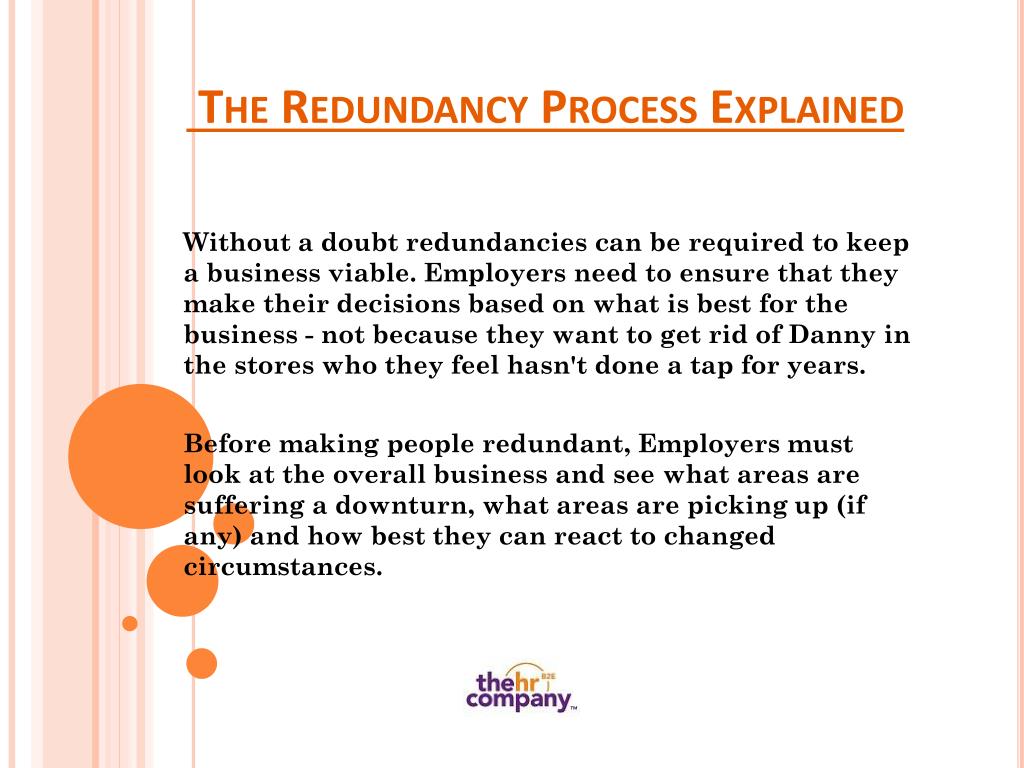If a Company Goes Bust Who Pays Redundancy? Legal Insights for UK Worker
Checking Out the Operational Dynamics of Company Redundancy and Its Long-Term Sustainability

Redundancy Approaches for Business Continuity
In order to guarantee nonstop operations, organizations should carry out efficient redundancy techniques for organization continuity. Redundancy in this context refers to the duplication of important elements or features within a system to mitigate the impact of prospective failures. By including redundancy strategies, organizations can improve their strength versus interruptions brought on by numerous factors such as natural catastrophes, tools failings, or cyber-attacks.
One usual redundancy strategy is the execution of backup systems and data storage services. This includes creating matches of crucial information and systems that can be turned on in situation of a main system failing. In addition, organizations can establish redundant interaction networks and source of power to preserve connection and operations during unexpected occasions.
Moreover, cross-training employees to do multiple functions within the company can function as a beneficial redundancy approach. This makes certain that vital jobs can still be lugged out also if crucial workers are unavailable as a result of ailment or various other reasons. Overall, effective redundancy strategies are essential for organizations to maintain functional continuity and reduce the influence of prospective disruptions.
Effect of Redundancy on Organizational Strength
Offered the crucial duty redundancy techniques play in making certain business connection, checking out the effect of redundancy on business resilience becomes critical for comprehending the all natural functional dynamics of a company. Redundancy, when tactically implemented, can considerably add to boosting a company's resilience in the face of unforeseen challenges.
Additionally, redundancy can boost staff member spirits and confidence, knowing that there are contingency plans in place to resolve unforeseen circumstances. This sense of safety and security can result in boosted productivity and a much more positive workplace. In addition, redundancy can cultivate technology and creative thinking within an organization as workers feel empowered to take calculated risks, recognizing that there is a safety and security web to sustain them in situation of failing. Overall, the impact of redundancy on business strength is profound, shaping the long-term sustainability and success of a business.
Balancing Efficiency and Flexibility in Redundancy
Accomplishing an unified equilibrium in between operational effectiveness and flexible adaptability is a crucial obstacle in the strategic deployment of redundancy within organizations. Also much adaptability without a solid operational foundation can result in inadequacies and incongruity.
To balance effectiveness and flexibility in redundancy preparation, companies have to carefully assess their functional requirements, market dynamics, and tactical goals. Ultimately, locating the best equilibrium in between performance and versatility is vital for developing a sustainable and resistant organization in the face of unpredictability.
Long-Term Sustainability Through Redundancy Planning
To ensure enduring feasibility and security, companies should strategically align their redundancy planning with long-lasting sustainability objectives, thus integrating operational efficiency with adaptive versatility. Firms ought to check out redundancy not as a responsive remedy to prompt problems however as an aggressive approach for long-lasting success.

Aggressive Steps for Sustainable Firm Workflow
Just how can firms proactively improve their functional sustainability for long-lasting success? Implementing positive steps is necessary for business aiming to ensure sustainable operations.
Moreover, promoting a culture of constant renovation and discovering within the company can enhance versatility to changing market problems and consumer needs. Urging worker involvement in decision-making procedures and providing chances for specialist development can improve spirits, performance, and general performance. Developing clear goals, keeping an eye on vital efficiency indicators, and frequently examining progress are vital parts of positive sustainability management.
Working look here together with vendors, customers, visit this site right here and various other stakeholders to promote lasting practices throughout the supply chain can develop a surge effect of favorable impact - redundancy pay if company goes bust. By taking aggressive steps towards operational sustainability, business can build strength, drive development, and secure their long-lasting success in an ever-evolving business landscape
Final Thought

In the realm of organizational monitoring, the tactical deployment of business redundancy stands as a critical yet intricate practice that demands a delicate balance between operational effectiveness and long-term stability. By exploring the operational dynamics that underpin firm redundancy and examining its broader effects for organizational strength and versatility, a nuanced understanding of just how redundancy strategies can form the future trajectory of a company begins to unravel.Provided the vital duty redundancy techniques play in guaranteeing organization connection, checking out the influence of redundancy on organizational durability comes to be critical for understanding the all natural functional dynamics of a business. On the whole, the impact of redundancy Click This Link on organizational resilience is extensive, shaping the long-lasting sustainability and success of a business.
In verdict, recognizing the functional dynamics of firm redundancy is essential for making certain lasting sustainability.